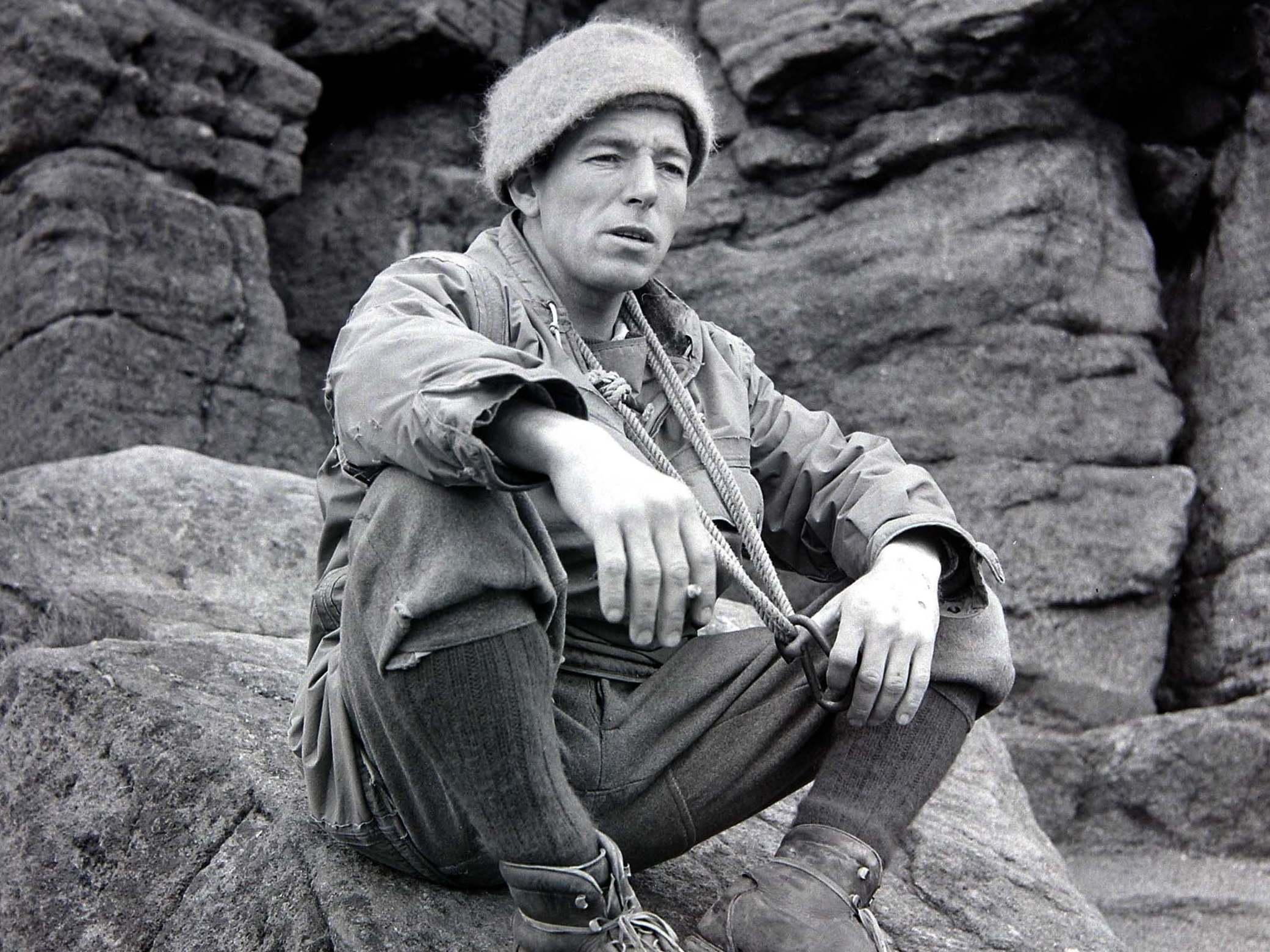Joe Brown: Mountaineer whose audacious ascents inspired legions of followers
He transformed the profile of climbing and helped to open up new routes to the most challenging peaks

Your support helps us to tell the story
From reproductive rights to climate change to Big Tech, The Independent is on the ground when the story is developing. Whether it's investigating the financials of Elon Musk's pro-Trump PAC or producing our latest documentary, 'The A Word', which shines a light on the American women fighting for reproductive rights, we know how important it is to parse out the facts from the messaging.
At such a critical moment in US history, we need reporters on the ground. Your donation allows us to keep sending journalists to speak to both sides of the story.
The Independent is trusted by Americans across the entire political spectrum. And unlike many other quality news outlets, we choose not to lock Americans out of our reporting and analysis with paywalls. We believe quality journalism should be available to everyone, paid for by those who can afford it.
Your support makes all the difference.When a mountaineering enthusiast sent a fan letter addressed only “The Human Fly, UK”, the Royal Mail knew exactly who to deliver it to. In the 1950s and 1960s, climber Joe Brown inspired a new breed of mountaineers with a series of daring ascents both at home and overseas. From Snowdonia’s Cemetery Gates to Kanchenjunga in the Himalayas, Brown’s climbing firsts earnt him another epithet: the Master.
Brown, who has died aged 89, was born in Ardwick, Manchester, the youngest of seven children. His father was a builder turned merchant seaman, who died of injuries sustained in a shipboard accident when young Joe was eight months old. Newly widowed and with seven children to raise, Brown’s mother took in washing and worked as a cleaner.
During the Second World War, the family moved to Chorlton-cum-Medlock. When the house next door was hit by an incendiary device, the family moved again to Longsight, bringing Brown closer to the disused quarries where he cut his teeth as a climber. He left school at 14 without qualifications and trained as a plumber and general builder.
Whenever he could, Brown would be found climbing. Legend had it that he made his first serious ascent in the Peak District using his mother’s washing line as a rope. Brown later clarified that it was in fact a piece of rope he’d found around some roadworks.
Brown was a natural and quickly became part of the Peak District climbing community. After completing his national service in the Royal Army Ordnance Corps, he met fellow working-class climber Don Whillans. As part of the climbing group the Rock and Ice Club, the two men altered the face of climbing, which had hitherto been a distinctly upper-class pursuit, raising standards wherever they went.
They opened up new routes that would become the benchmark for hard climbing in the UK, such as the line of cracks up the right wall of Cenotaph Corner, on Dinas Cromlech in Snowdonia’s Llanberis Pass, which Brown and Whillans first climbed in 1951. They called this new route Cemetery Gates, which seemed an apt name: earlier that year Brown had attempted the route with another partner. Halfway up, he’d dropped a hammer, which he was holding between his teeth, onto the other man’s head, definitively cutting short the expedition for that day.
Brown and Whillans also opened up new routes in the Alps, but in 1955 Brown split from Whillans to join Charles Evans’s expedition to scale the southwest face of the Himalayan peak Kanchenjunga. Brown reached the summit on 25 May 1955, partnered by George Band. A year later, Brown was the first to climb the west summit of the Muztagh Tower in the Karakoram range that borders India, Pakistan and China, partnered this time by Ian McNaught-Davis.
He moved to Llanberis, Gwynedd, where he opened the first of three climbing shops, selling equipment that he himself designed. He would make “chockstones”, used to wedge climbing ropes into rock fissures, by drilling the thread out of ordinary steel nuts.
Several of Brown’s climbs were televised. He broadcast from close to home, in Wales and Scotland, and from further afield, in the Alps and Iran. For a 1980s show on the Old Man of Hoy, the 449ft-high sea stack on Hoy in the Orkneys, Brown’s daughter Zoe was his climbing partner. He also made programmes about fishing and in 1986 acted as Jeremy Irons’s body double for the waterfall scenes in Roland Joffe’s film The Mission.
Brown continued to climb into his sixties, when he was part of an expedition to Everest’s previously unconquered north-northeast ridge. He was made a CBE in 2011 for services to rock-climbing and mountaineering. He told the BBC at the time: “Receiving the CBE is so strange, because it’s like I’m being rewarded for enjoying myself.”
He married Valerie Gray in 1957. She and two daughters survive him.
Joe Brown, climber, born 26 September 1930, died 15 April 2020
Join our commenting forum
Join thought-provoking conversations, follow other Independent readers and see their replies
Comments